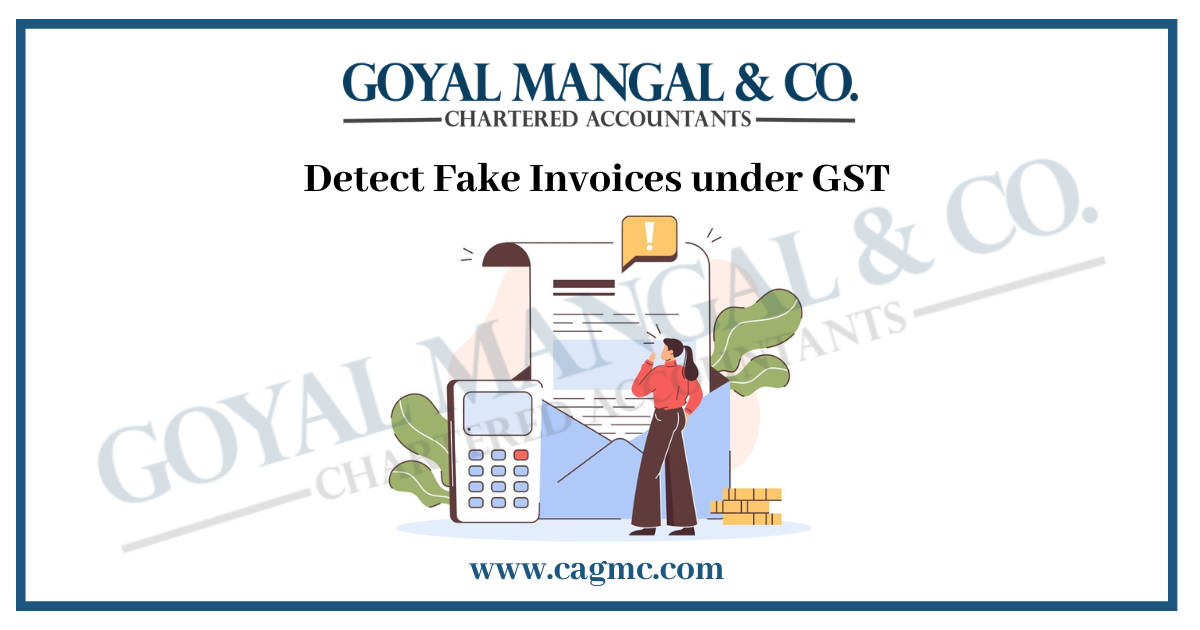
The Goods and Services Tax (GST) implementation has enhanced the taxation system, efficiency and transparency in financial transactions. However, this positive execution has also provided a hike to the issue of fake invoices GST, which threatens the integrity of the GST structure. In the current comprehensive guide, we will detect fake invoices under GST, along with authorities having mechanisms required to combat the growing menace. Furthermore, there will be a discussion on penalties for fake invoices in GST.
Table of Content
How do fraudsters generally create fake invoices GST?
There are certain tactics to make a fake invoice GST:
- They fabricate transactions, which never occurred, creating invoices for goods and services that were never supplied.
- Making ghost suppliers and shell companies is a common strategy, they set up businesses that exist only on paper.
- In certain cases, persons within the organization may collude with external parties to make fake invoices GST.
- Another tactic is to inflate the real value of transactions and to manipulate the prices on invoices to exaggerate the amount payable.
- They may forge documents, which include invoices, or other existing documents to amend key information.
- In the matter of complex supply chains, fraudsters may exploit the transactions to create confusion.
The process for recognising fake Invoices GST?
There is a step-by-step process to identify the fake Invoices GST:
- Verify the GST Identification Numbers (GSTIN): Review the GSTIN of suppliers and recipients, to make sure that they are real and match with format specified by the GST authorities. Also, check GSTIN details from the GST Portal to confirm the authenticity.
- Check Supplier details: Confirm the supplier’s name, residential address, and contact details. Cross-check these details with official records and directories to be sure about the legitimacy.
- Review transaction information: It includes the description of goods and services, prices, quantities, etc.
- Verify the duplicate invoices: Check that the similar invoice number is not utilised for various transactions. Duplicate invoice amounts to indicate fraudulent activities.
- Examine supporting documents: Check supporting documents like delivery challans, purchase orders and contracts. In case there is any kind of discrepancies between these documents and tax invoices, which leads to fraud.
- Check Tax Calculations: Check the accuracy of tax calculations such as the amount of GST, incorrect calculations or low tax amounts can be signs of fake invoices GST.
- Verify for incomplete and blank invoices: Incomplete or blank invoices, lack of essential information and no business log may lead to a lack of authenticity.
- Stay updated and informed about scams
- Examine Digital Signatures: In case the invoice contains a digital signature, then make sure it must be an authorised signatory and valid.
- Utilise the technological solutions that are designed to detect discrepancies in invoices. Systems like automatically detect fake transactions.
- Analyse the transaction volumes and patterns.
Penalties for issuing fake GST invoices under GST
With the help of fake invoices GST, one can analyse the categorised amount of availed by the taxpayer to put penalties:
- ITC availed or Input Tax Credit exceeds Rs 1 Crore, however doesn’t exceed Rs 2 Crore, the taxpayer may go to imprisonment for up to one year and a fine;
- ITC availed or exceeds Rs 2 Crore but doesn’t exceed Rs 5 Crore, the taxpayer may go to imprisonment for up to 3 years and a fine;
- ITC availed or used by the taxpayer with the help of fake invoices, which exceed more than Rs. 5 Crore, then the taxpayer may go to imprisonment for up to five years along with a fine;
- In a situation where taxpayers are involved in any offences discussed above, they can face imprisonment for up to six months or a fine or both.
Takeaway
As organisations evaluate GST compliance, the concept of fake invoices GST demands unwavering attention. This guide provided GST circular on fake invoices, empowering shareholders with the strategies required to detect and prevent any fraudulent works. By reading this comprehensive guide, it is advisable to stay vigilant, embrace the technology and foster a compliance culture. Through this, we can wholly protect the integrity of the GST structure to make sure about the continuous transparency and accountability of financial practices.


